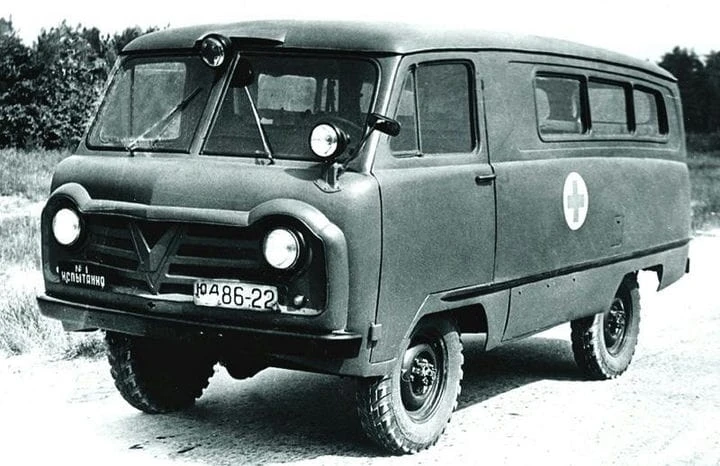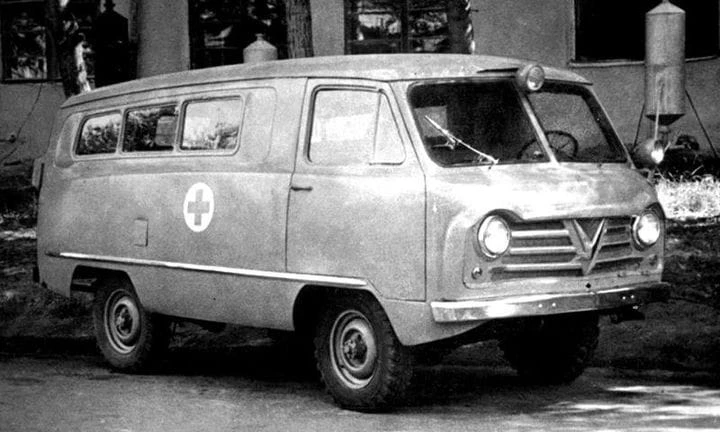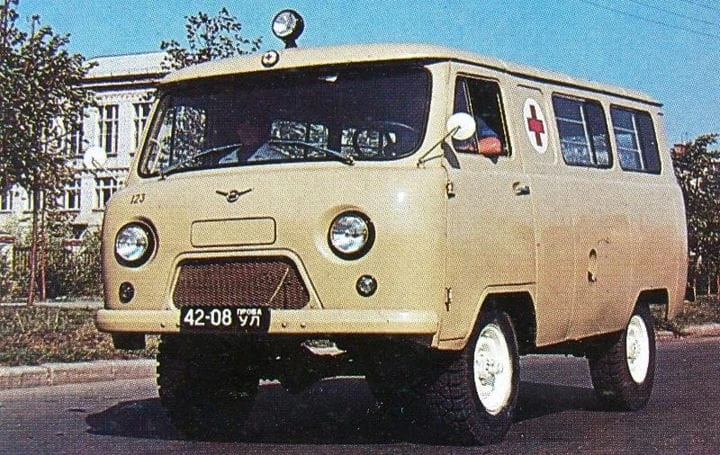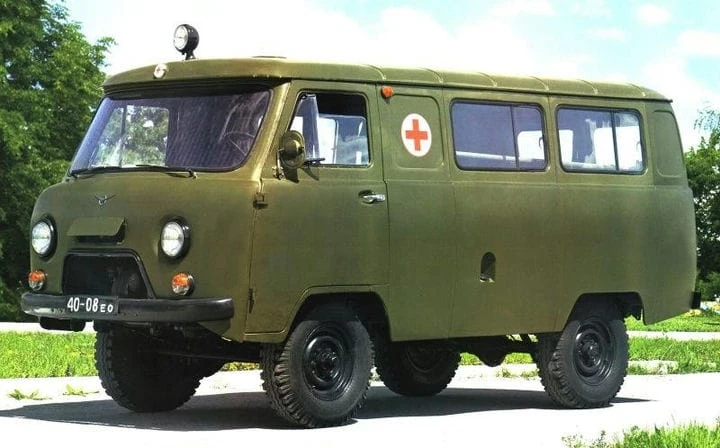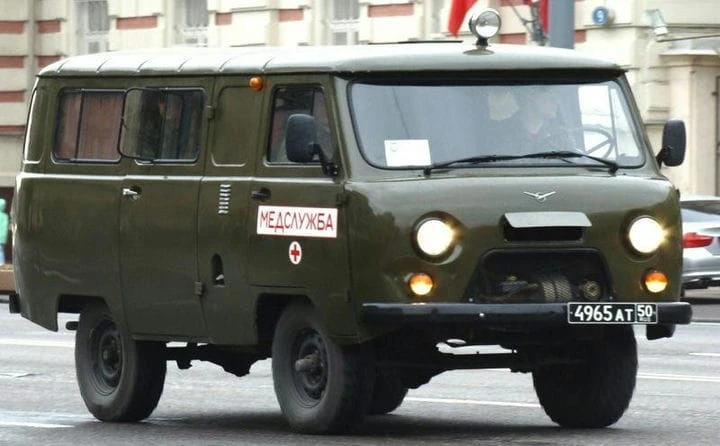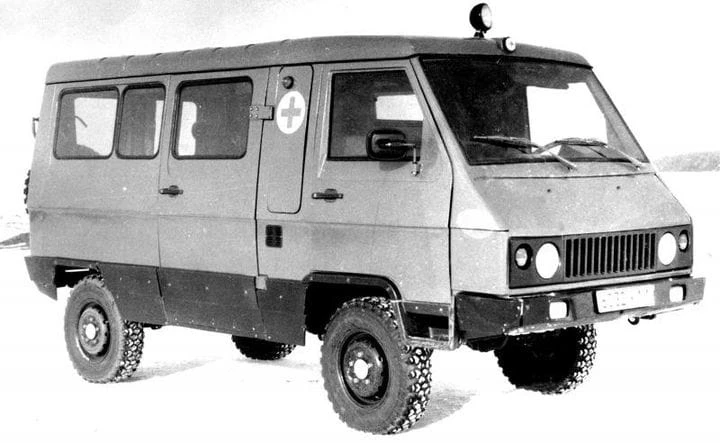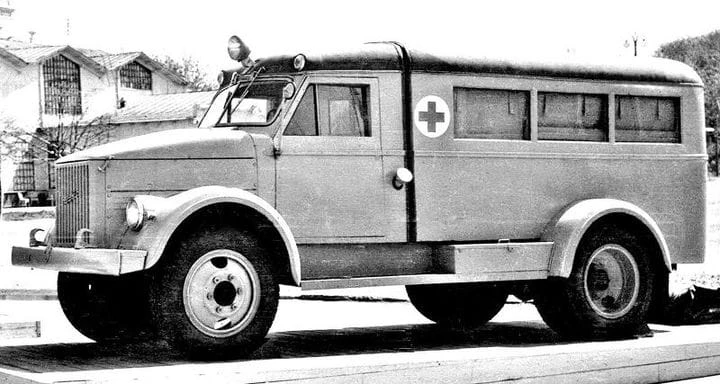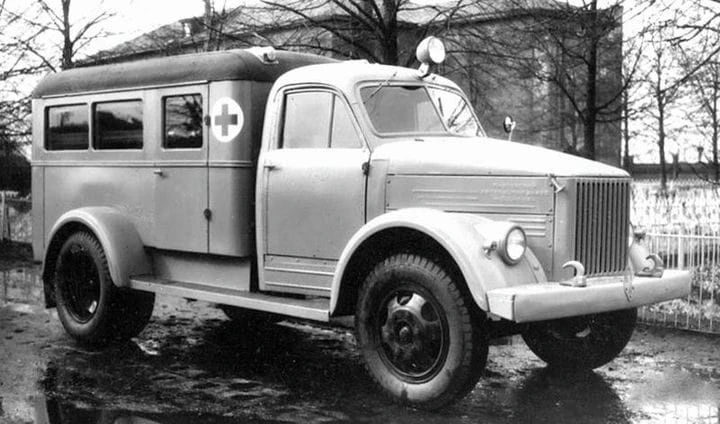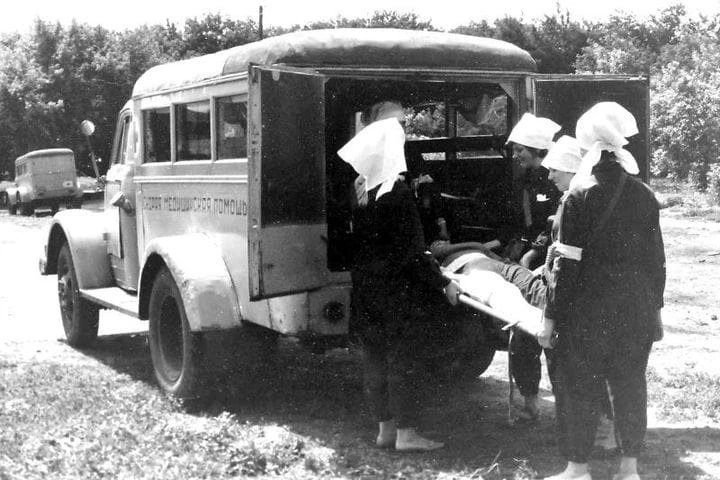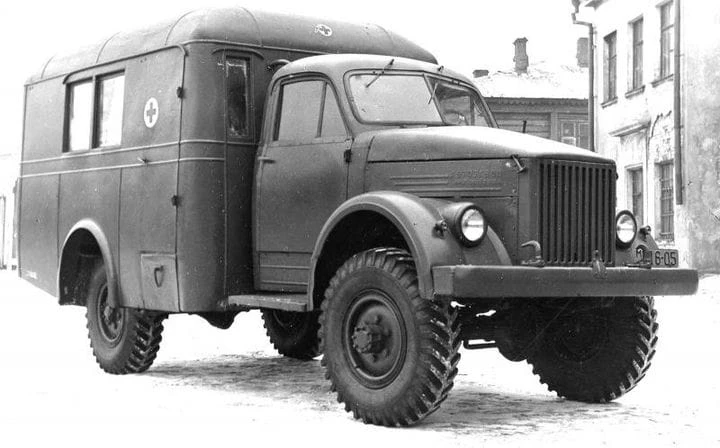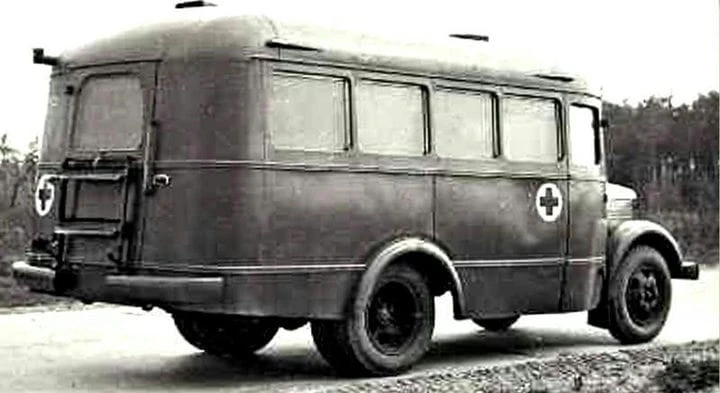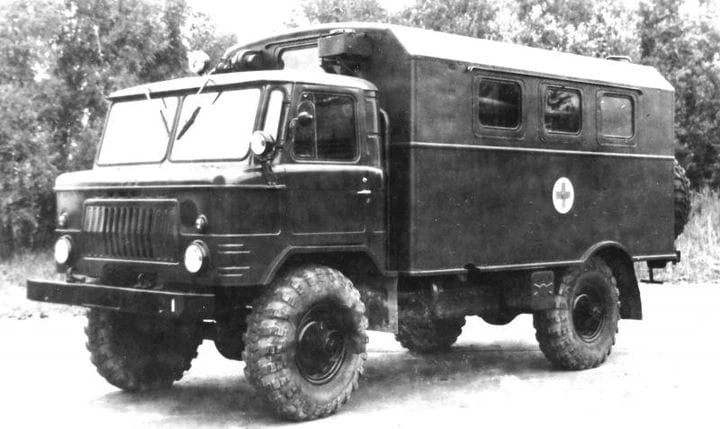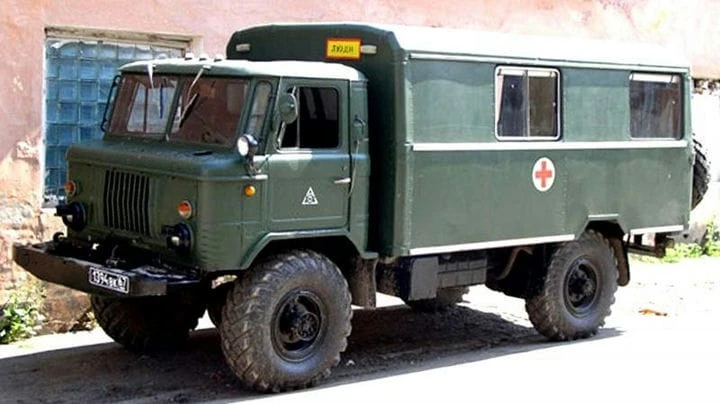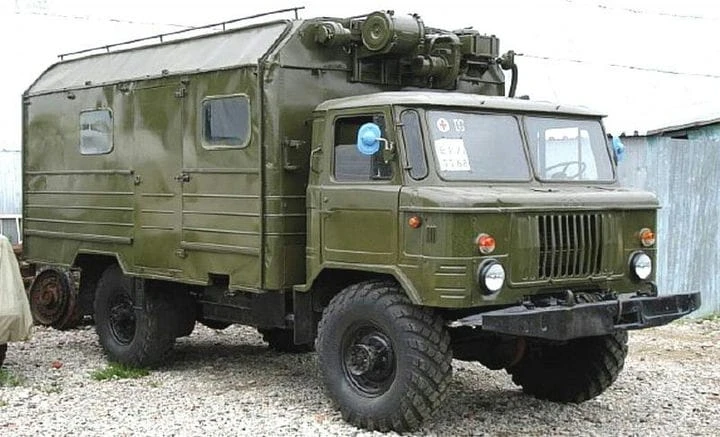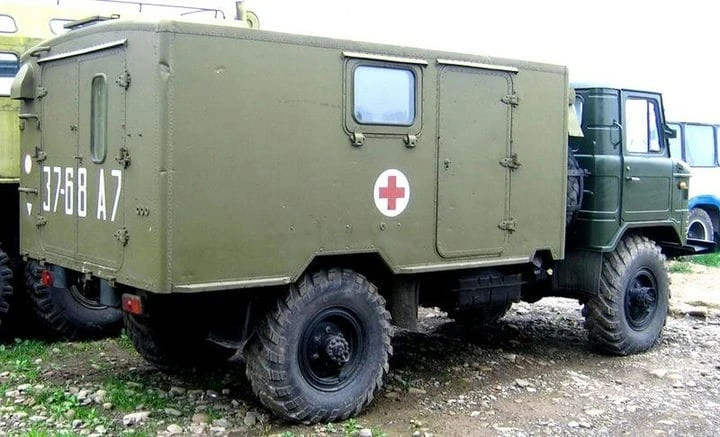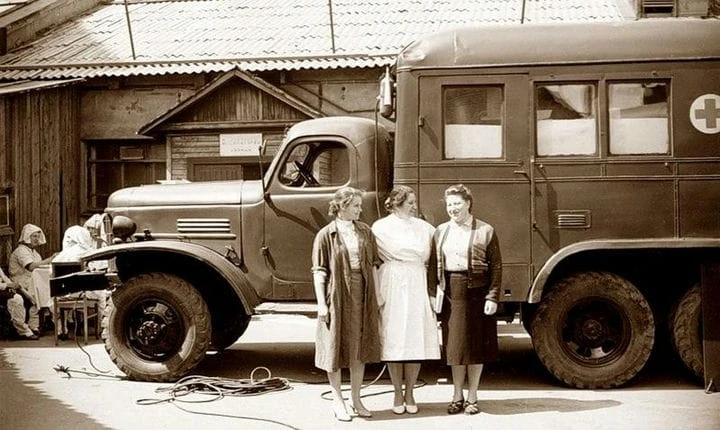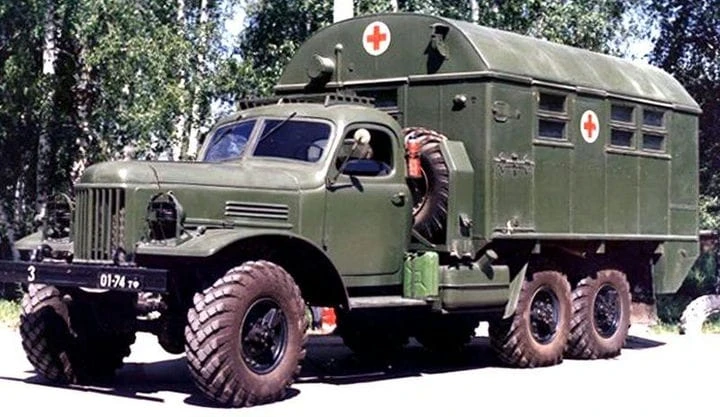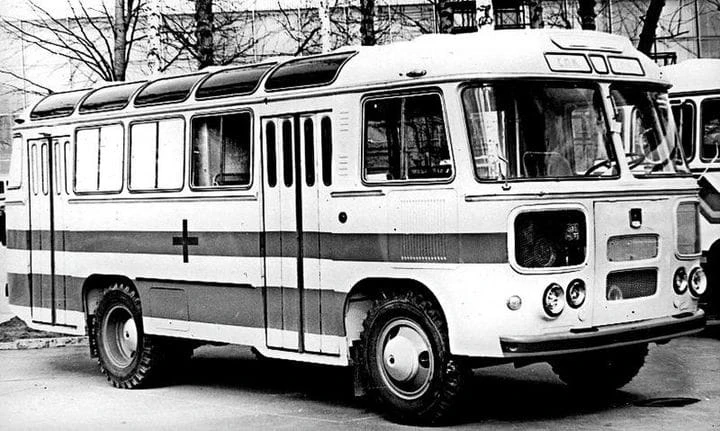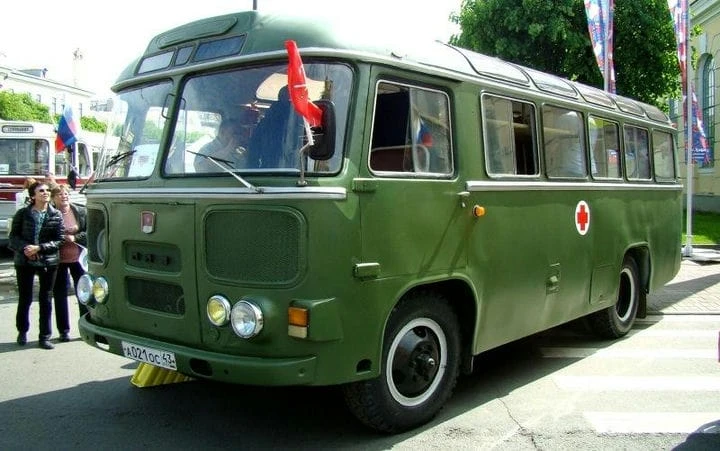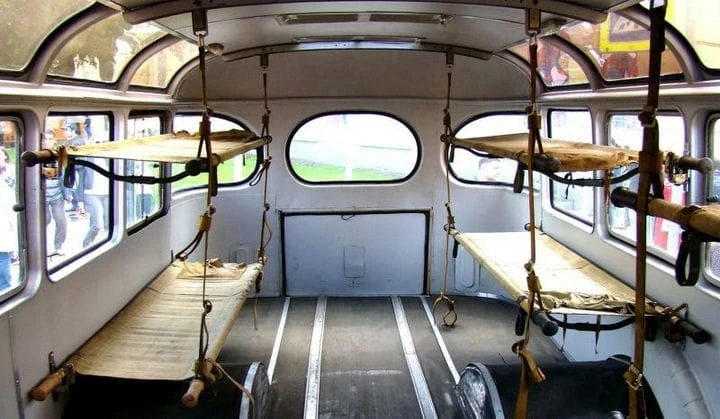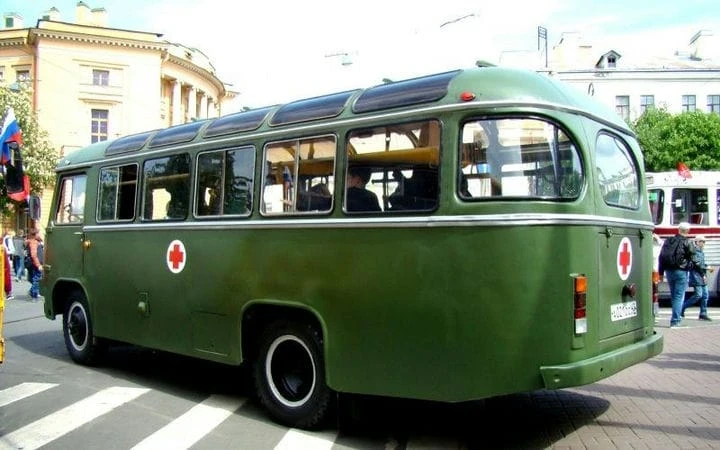Cars from the risk zone: invisible ambulances of the Soviet armed forces
This article will focus on the creation and operation in the Soviet Union of a fairly extensive army family of special ambulances that quietly worked in the most diverse and remote places of service, residence, movement and training of military personnel.
Little-known military sanitary vehicles, vans and small buses were based on serial two-axle chassis with rear or all-wheel drive. In accordance with their purpose, they were equipped with special bodies, suspensions and very simple internal equipment and equipment for delivering the wounded and sick to treatment centers with first aid along the way. Many of these cars were classified and assembled by small licensed enterprises.
Light Ulyanovsk “nurses”
The first Soviet dual-purpose ambulances UAZ-450A appeared in the mid-50s as part of the low-tonnage generation “450” (4×4) wagon layout. They were distinguished by a massive front cladding with a decorative V-shaped “tick”, wide air intake slots and a softer suspension.
Prototypes of 55-horsepower ambulances UAZ-450A by the famous Soviet designer V.I. Aryamova. 1957
In 1958, modified serial UAZ-450A cars with a 62-horsepower engine received a simplified three-door body with a rounded front end, an internal partition and longitudinal places for delivering eight seated wounded or two to four people on stretchers suspended from ceiling brackets. According to this scheme, in the 60s, a modernized 70-horsepower version of the UAZ-452A was created with folding seats for medical staff.
The UAZ-452A car, which was in demand for army needs, almost did not differ from the first version. 1966–1985
In the mid-80s, the production of more powerful “orderlies” UAZ-3962 began with a dual-circuit hydraulic brake system with a vacuum booster, three double folding seats along the sides, floor guides for stretchers and an expanded set of medical equipment.
Ambulance military vehicle UAZ-3962 of the first production with engines of 77–80 hp. 1986
90-strong “medical service” UAZ-3962 to accompany participants in military parades. Photo 2010
In the early 90s, the Ulyanovsk Automobile Plant tried to introduce into production the promising military family UAZ-3172 (4×4) with functional forms, power steering and an all-metal five-door body with a capacity of 10 people, which was planned to be used as ambulances. Under conversion conditions, only nine prototypes were collected.
Sanitary one-ton air transport vehicle UAZ-3172 with a 77-horsepower engine. 1992–1993
Sanitary history of GAZ-51
On this legendary truck, only two general-purpose ambulances of the same type were created with increased smoothness, different cabs and bodies and a narrow right side door for medical staff, which were produced by two enterprises.
In 1950, on the GAZ-51K chassis with a soft rear suspension and hydraulic shock absorbers, the Gorky Bus Plant began to produce GZA-653 medical vehicles for servicing hospitals and hospitals. Their body was closely docked to the rear wall of the wooden driver's cab with a partition and a window. The rear hinged doors served to load four wounded on stretchers or up to 13 seated patients. The plant was redesigned two years later.
GZA-653 ambulance on the GAZ-51K chassis with a soft suspension that increased the smoothness of the ride. 1950–1952
In 1953, the production of modified “nurses” of the PAZ-653 brand was continued by the Pavlovsk Bus Plant named after A.A. Zhdanov. Unlike their predecessor, they used an all-metal cab from a GAZ-51A truck and a glazed body on a wooden frame with rounded outlines and sheathing made of thin metal sheets located separately from it.
Ambulance vehicles PAZ-653 with a modular body and a rear suspension of increased softness. 1953–1958
The main stretcher was placed in the central part of the cabin between two longitudinal seats, which, if necessary, were suspended along the side walls of the body in two tiers to deliver four wounded. Without a stretcher, 13 people also fit in the car, including one or two members of the medical staff. Until 1958, the plant assembled 11.5 thousand PAZ-653 vehicles.
Ambulance PAZ-653 with an average location of a stretcher and places for attendants
In the 50s, the Moscow Central Automobile Repair Plant No. 101 (TsARZ) of the Motor Transport Administration of the People's Commissariat of the Armed Forces of the USSR was engaged in the manufacturer of army ambulances on the modified chassis of the Gorky Automobile Plant. Based on the GAZ-51I with a soft suspension and an elongated frame, he produced a rear-wheel drive version of the AC-3 with a streamlined ABC wood-metal body and narrow windows in the front wall.
Military vehicle AC-3 with hydraulic shock absorbers, side and rear doors. 1953 (archive 21 NIITs)
Sanitary all-wheel drive all-terrain vehicles GAZ-63
From the beginning of the 50s, the Pavlovsk plant also assembled an army medical service vehicle AS-1 with a body from a PAZ-653 serial ambulance, rearranged to a GAZ-63 all-wheel drive chassis.
Compact ambulance AS-1 with a body from the PAZ-653 car on the GAZ-63AC chassis. 1957
The second important development was a typical army version of the AC-3 manufactured by TsARZ on the GAZ-63E / 63AE chassis with four hydraulic shock absorbers in the suspension, a rounded ABC body with a heater, an intercom in the cockpit and rear folding steps. He transported up to seven military personnel on a three-tiered stretcher and up to four seated wounded, in total – 14 people.
Military vehicle of the medical service AC-3 with a wood-metal body ABC. 1952–1956 (archive 21 NIITs)
Sanitary PAZ-651V – replacement for PAZ-653 machines
In 1953, on the basis of the PAZ-651 serial passenger bus, a special military sanitary version of the PAZ-651V with rear hydraulic shock absorbers was created, designed to replace the simplified PAZ-653 vehicles.
Special military bus PAZ-651V on the chassis PAZ-651, created by order of the Ministry of Defense. 1953–1958
The body housed longitudinal folding seats, suspended three-tier stretchers for transporting nine bedridden wounded and two doctors, as well as an ordinary wood-burning stove with an outlet pipe on the roof. With the combined installation of seats and stretchers, the car could carry 12 people at the same time.
On the back wall of the PAZ-651V car there was a door to the passenger compartment and a folding ladder for the lightly wounded.
Sanitary variety of the GAZ-66 brand
The creation of cabover trucks GAZ-66 (4×4) with standard bodies and a tire pressure control system led to a revolution in the field of transporting wounded and sick patients and the medical staff accompanying them for first aid. Since the mid-60s, the military considered the inhabited pressurized bodies of the K-66 series of three types to be the most acceptable in terms of versatility, safety and durability.
One of the first to be created was the AS-66 ambulance vehicle with a capacity of up to 18 people, built at military plant No. 38 to replace the previous AS-3 vehicles and then produced by the Voronezh car repair plant No. 172. Its body had three options for placing the wounded on stretchers installed in two or three tiers, and longitudinal semi-soft seats for seated wounded and medical staff.
An experienced ambulance AS-66 with a K-66 body on the GAZ-66F chassis. 1963 (archive 21 NIITs)
Subsequently, the car was produced in upgraded versions of the AS-66M1 and AS-66MP with various body options, a filter-ventilation unit, a heater from a car engine and an intercom with a cab. The universal version of the AC-66-01MT combined a “nurse” with a longitudinal stretcher and an ordinary military bus.
Modernized AS-66MP medical service van based on the GAZ-66-11 chassis with a K-66V high body. 1985
Multi-purpose sanitary-passenger version of AS-66-01MT based on GAZ-66-12 with a winch (photo by M. Shelepenkov)
Since 1987, plant No. 172 has been assembling a universal 18-seat dual-purpose vehicle TS-3293 with a glazed body from a shift vehicle, capable of delivering military personnel and the wounded on a longitudinal stretcher and transporting ordinary passengers.
Universal vehicle TS-3293 in a combined version on the GAZ-66-11 chassis (photo by A. Melnikov)
The high body of the K-66V housed the AP-2 dressing room with a mechanized dressing table, surgical and resuscitation equipment, lighting, heating, ventilation and water supply systems.
Multifunctional dressing station AP-2 in a special K-66V body on the GAZ-66-12 chassis with a winch
In the low K-66N van, the WUA automobile pharmacy was produced, which provided the military with medicinal and dressing materials, consumables and medicines for the simultaneous provision of medical care to 600 wounded and sick.
Mobile pharmacy “bench” WUA in a low-profile body K-66N with life support systems
Triaxial sanitary curiosities
On a ZIS-151 truck with a special streamlined wood-metal body, the Luhansk Automobile Assembly Plant assembled a mobile station for the procurement and preservation of donor blood, which was delivered to large hospital centers.
Machine PSZK-1 on the chassis ZIS-151 with a special glazed body for collecting and storing blood. Photo from 1963
The PML field medical laboratory was based on the ZIL-157K chassis to conduct a complex of sanitary-hygienic, bacteriological and radiological studies in the field, to detect dangerous infections and foci of infection.
Integrated field laboratory PML in a capacious KUNG-1M body on the ZIL-157K chassis. 1965
On a ZIL-131 car with a K-131 body and a two-axle trailer SMZ-8325 with an eight-kilowatt power plant, a field X-ray diagnostic complex AR-2U1 was created, which worked in two remote tents.
The AR-2U1 complex on the ZIL-131 chassis for the transportation of X-ray equipment and a photo lab for developing negatives. 1983
The long and difficult life of Kolobok
The mass-produced 23-seat bus PAZ-672 with a load-bearing all-metal body and two folding doors was created in 1968 by the Pavlovsk plant on the units and assemblies of the 115-horsepower GAZ-53A truck. Since 1970, it has been used to a limited extent in the Soviet army as a mobile blood sampling station with two separate offices for personnel of 12 people and a station for the chief of staff of the Civil Defense.
Sanitary version of the serial bus PAZ-672 with a mobile blood collection point PPZK. 1973
Modernized in the early 80s, the bus with one front automatic door and new lighting devices was marked PAZ-672M and nicknamed “Kolobok”. In 2018–2019, the surviving sample of the 1989 issue, which belongs to the St. Petersburg bus depot No. 2, was restored.
Restored bus PAZ-672M at the retro transport parade in St. Petersburg (photo by the author)
Now in the Kolobok cabin, instead of passenger seats, you can only see a set of four stretchers, two floor-mounted and two suspended, and the bus itself officially serves “for the evacuation of citizens in case of emergencies or hostilities.”
Interior fittings of a so-called “mobile reserve” bus with four used stretchers
Former city bus PAZ-672M on the streets of St. Petersburg. May 2019 (photo by the author)
The title photo shows an AP-2 military dressing vehicle as part of a field hospital with two folding tents on a GAZ-66-12 vehicle.

